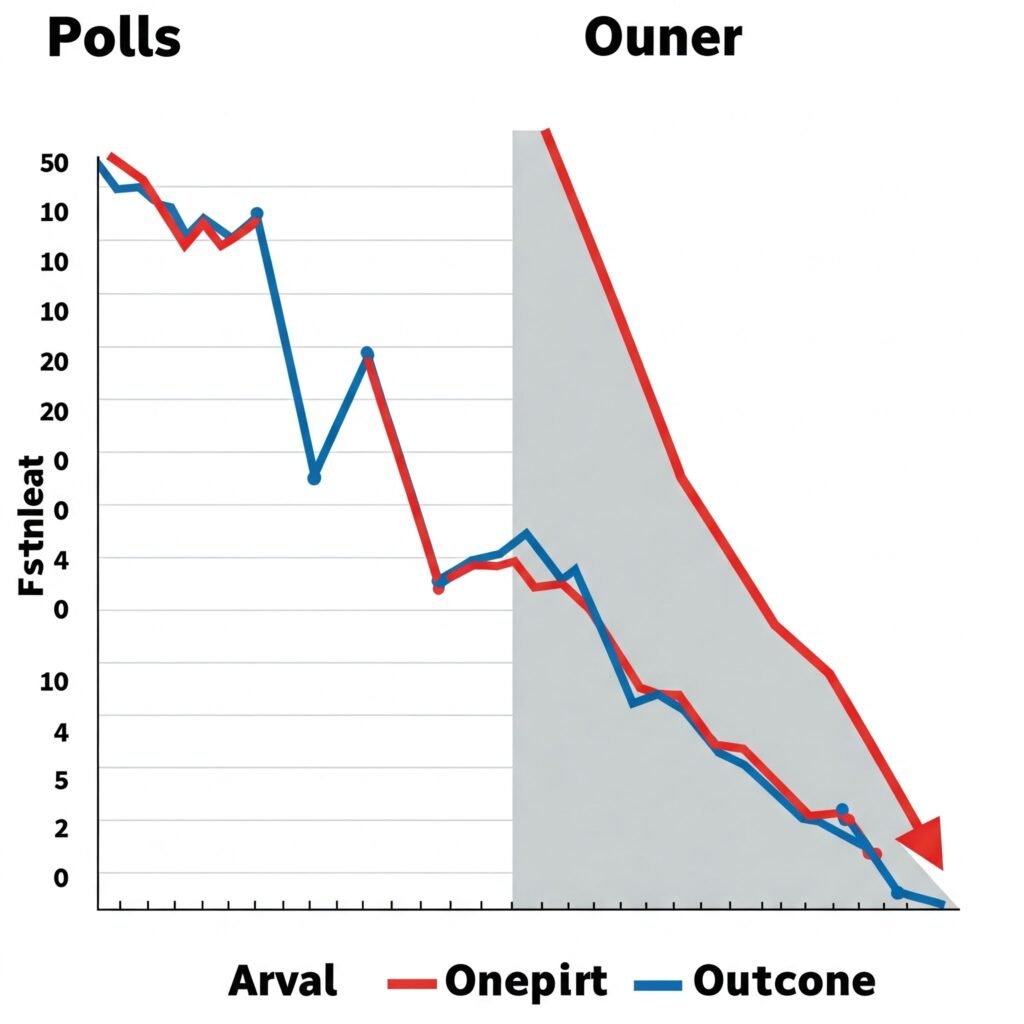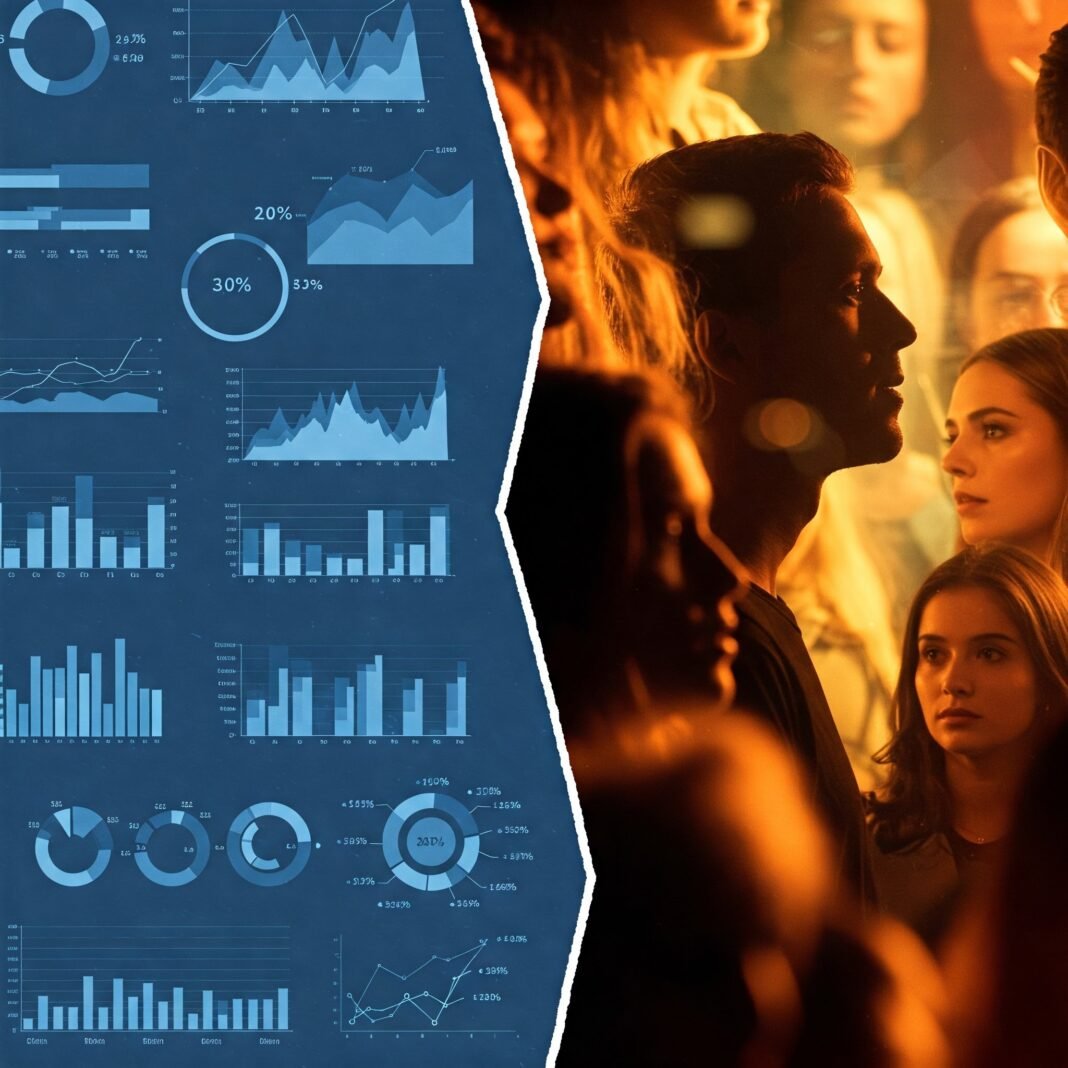What the Polls Say Vs What the People Think: The Core Question
At its heart, our topic today is the perceived gap. It’s the space between quantitative data (like poll numbers) and qualitative observation (such as personal experience and community feeling). Polls seek scientific precision. They use statistics to guess the views of a large group. They base this guess on a small sample. “The people,” however, represent a complex reality. Millions of individual thoughts, feelings, and intentions exist. They are messy, varied, and sometimes conflicting.
What Polls Are Intended to Do
Polls play an important role. This is true in democracies and in business research. They are specifically designed to:
- Measure what the public thinks about certain issues.
- Check approval levels for leaders and groups.
- Attempt to guess election results.
- Understand what customers like and how they act.
- Provide data to help make policies and plans.
When pollsters do their job right, they follow statistical rules. Polls can give valuable clues about large populations. Surveying everyone is simply not possible. Polls offer a structured way to listen broadly. They aim to include voices beyond just the loudest ones.
What People Really Think: The View From the Ground
But there’s a challenge. It’s hard to easily capture personal views and local feelings with survey questions. What people truly think is shaped by many things:
- Their own experiences and biases.
- Their local area and community values.
- Social pressure and wanting to give a “right” answer.
- Moods and answers changing based on the day or question wording.
- The “silent majority.” These are people with views who don’t poll or speak up publicly.
This is often where the feeling of difference begins. Your own social circle might feel a certain way. Your talks with neighbors or family could show one picture. National poll results, though, might look very different. To grasp What the Polls Say Vs What the People Think, we must value both views.
Bridging the Gap: Why What the Polls Say Vs What the People Think May Differ
When polls and public feeling don’t match, it’s usually not bad intent from pollsters. Instead, challenges in the polling process itself are often the cause. Human behavior is also complex. Let’s explore why What the Polls Say Vs What the People Think might not line up perfectly.
How Polls Work: The Method and the Difficulty
Polling builds on probability sampling. The goal is to pick a small group, called a sample. This sample should represent the larger population well.
- Aiming for Randomness: The best method is simple random sampling. Everyone in the population would have an equal chance to be picked. But achieving truly random samples is tough. It costs a lot of money. Pollsters use methods like random phone dialing. They might use lists of registered voters or databases. Each method has its own limits.
Making Samples Representative: The Step of Weighting
Perfectly random samples are rare. So, pollsters “weight” the data. They adjust the results after they collect them. Imagine a sample has too many older people. It might have too few young people compared to the known population makeup. Pollsters will then give less “weight” to older responses. They give more weight to younger ones. This makes the final data look more like the real population numbers. Weighting is complex. Different ways of weighting can give different results.

Why Polls Sometimes Miss: Common Inaccuracies
Pollsters use smart methods. Still, some factors can cause errors.
- Understanding Sampling Error: This error is natural. It happens because you survey only a sample, not everyone. Pollsters show it as the “margin of error.” A poll with a ±3% margin of error means the real number for the whole population is likely within 3 percentage points either way. Smaller margins of error need bigger samples.
- The Problem of Non-Response: Think about people who don’t answer the phone. Or those who don’t fill out the online survey. If these people have very different views than those who do respond, the sample becomes unbalanced. Fewer people answer polls now. This makes non-response a bigger challenge.
Human Factors: The “Shy” Voter and Social Pressure
One key reason for the gap lies in how people behave. It helps explain What the Polls Say Vs What the People Think.
- Seeking Social Approval: People might feel they should give answers that seem popular or accepted by society. This is true even if their private views differ. It often affects answers on sensitive topics.
- The “Shy” Voter Effect: In politics, some voters might hesitate to say they support a candidate seen as controversial. They won’t tell a stranger on the phone or an online survey. But they will vote for that candidate in private. This effect was talked about after some unexpected election results.
Your Bubble vs. Reality: The Echo Chamber Effect
We live in a digital age. Social media and personalized news feeds create “echo chambers.” Your online world, your friends, your local area – they might share similar views. This can skew your idea of public opinion nationally. It can make national poll results that don’t match your local view feel wrong. Understanding What the Polls Say Vs What the People Think requires looking beyond your personal circle.
Real-World Cases: When What the Polls Say Vs What the People Think Diverged
History gives us many examples. Outcomes, especially in elections, sometimes looked very different from what polls predicted just before the event. These moments clearly show the difficulty of capturing the true public mood.
Case Study 1: The 2016 US Presidential Election
This is perhaps the most cited recent case. National polls mostly showed Hillary Clinton leading in the popular vote. She did win the popular vote. But state polls in key states were less accurate. They didn’t predict the Electoral College outcome well. Donald Trump won that. Why the difference? Ideas included potential shy Trump voters. Some thought voters without a college degree were undercounted. Others pointed to late shifts in opinion.
Case Study 2: The Brexit Referendum (2016)
The UK vote on leaving the European Union is another example. Final polls suggested “Remain” might have a small lead. Or they said it was too close to know. The actual result was a clear vote for “Leave.” What caused the miss? Experts debated turnout among different groups. They also discussed potential shy Leave voters.
Case Study 3: The Australian Federal Election (2019)
Polls consistently predicted a Labor win before this election. Some polls showed a good lead for Labor. But the conservative Liberal-National Coalition won instead. They surprisingly got a majority government. This miss caused pollsters in Australia to think hard about their methods and samples.
These examples don’t mean polls are useless. They show polls are imperfect tools. They capture a moment under specific conditions. The gap between What the Polls Say Vs What the People Think became very clear in these situations.

Navigating the Data: How to Critically Understand Polls
So, how can we better understand polling data? How can we connect What the Polls Say Vs What the People Think in our minds? We need to become critical consumers of information.
Here are practical steps you can take:
Look Beyond the Headline Number
Don’t stop at the main percentage reported. Always check the poll’s details.
- Check the Method: How did they do the poll? Who was asked (likely voters, all adults)? How did they contact people (phone, online)? What was the sample size? What is the margin of error? When was the poll done? All these details matter a lot.
Consider Who Conducted the Poll
Who is the pollster? Are they known and respected? Are they non-political? Or are they linked to a campaign or special interest group? Be aware that money sources can sometimes subtly affect how a poll is done or how results are presented.
Focus on Trends Over Time, Not Just One Poll
One poll is just one piece of information. Look at several polls from different trusted groups over a period. See if a trend appears. Multiple polls showing a similar result are much more reliable than one poll alone. Websites that collect poll data can be helpful. But still, look at the original source data.
Understand Likely Voter Models
In election polls, pollsters try to guess who will actually vote. They use models to do this. Different models make different guesses about who will turn out. This can lead to different poll results. These models are predictions. They are not facts.
Balance Poll Data with What You See
Your own observations and talks are useful. They provide context. But remember they reflect your specific circle. Polls try to show a wider picture. But they might miss local details. They might also miss how strongly people feel. Use both polls and your own experience. Let them inform your view together. Don’t reject one just because it doesn’t match the other.

What the Polls Say Vs What the People Think: The Future of Measuring
The world of polling keeps changing. Pollsters constantly work to solve problems. They try to reach more people accurately. They try to capture complex feelings. Researchers are exploring new ways:
- Using large-scale data about behavior (while minding privacy rules).
- Building smarter computer models to fix issues like non-response.
- Combining information from various sources.
The effort to truly measure What the Polls Say Vs What the People Think will continue. It’s a changing process. It reflects new technology, how we communicate, and changes in society itself.




